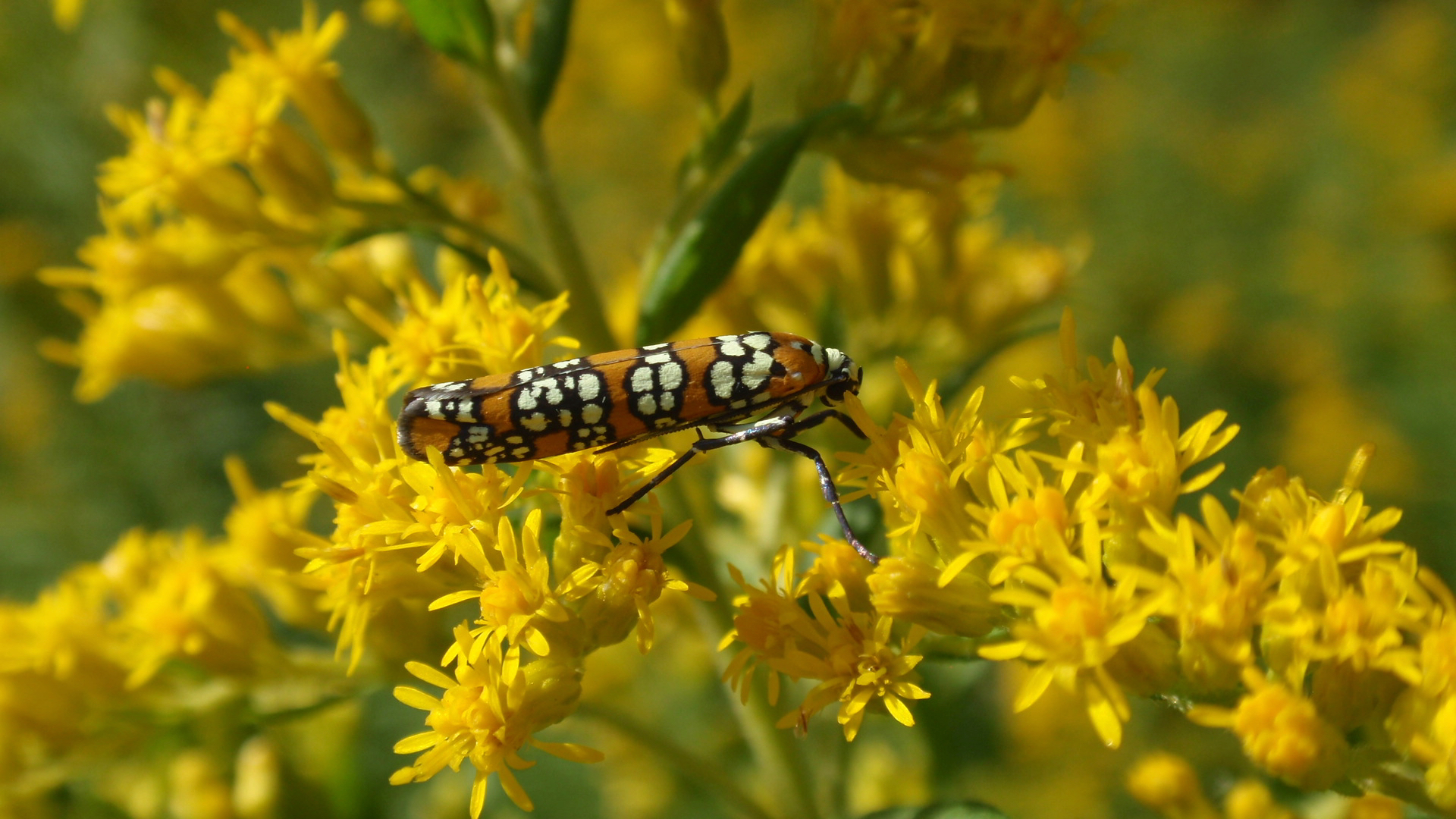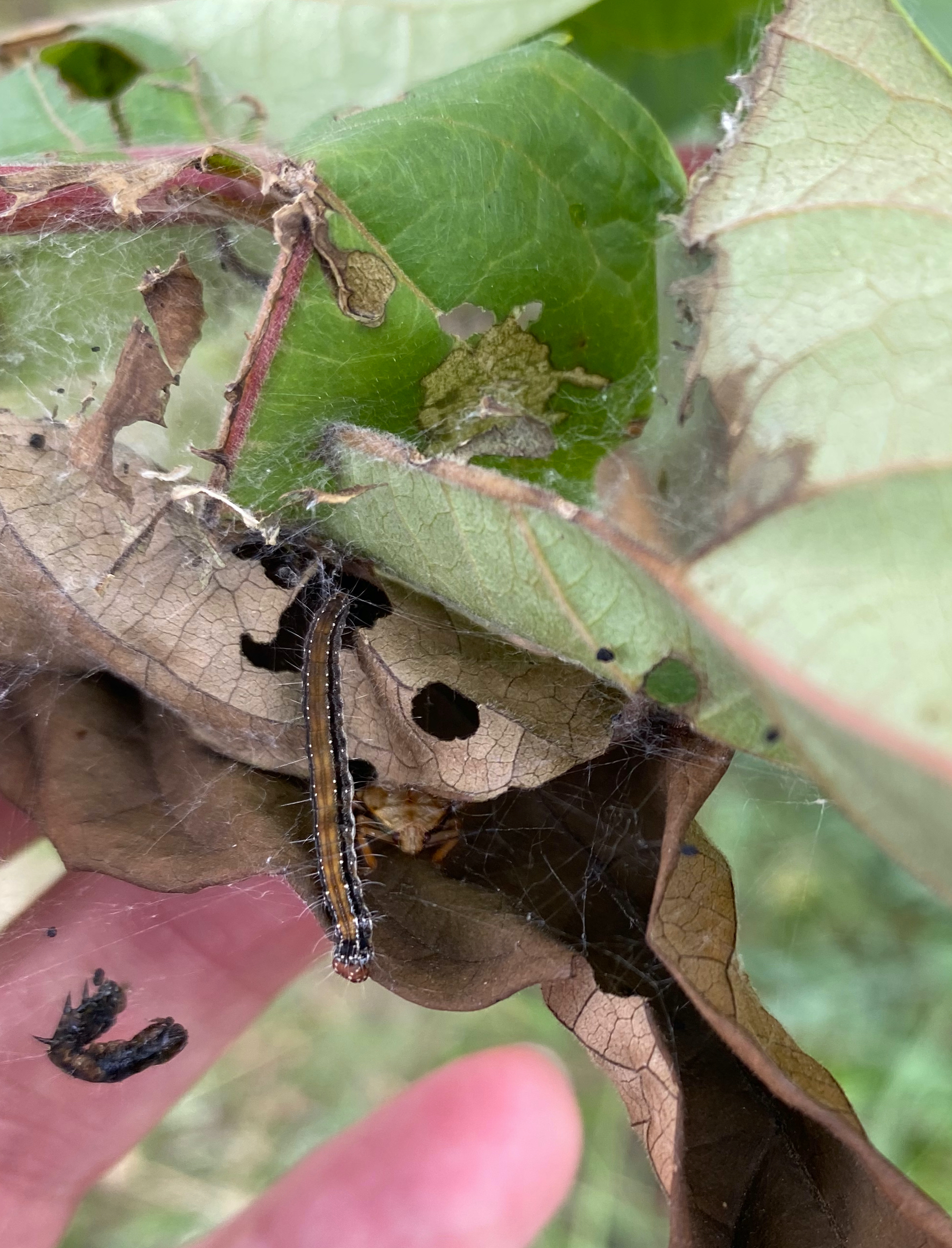Michigan insects in the garden – Season 2 Week 8: Ermine moths
Small, speckled moths that may cause damage.

Yponomeutidae (Ermine moths) are a mouthful of a family name to say but include several small moths with wingspan lengths of 1.2-3 centimeters that are present in the garden. The name ermine arises from the resemblance of their colors to the ermine, a European or North American mammal that looks like a weasel. The wings of these smaller moths are held over the body. Over 30 ermine moth species exist in North America. They come in a variety of colors from the black dalmatian forewing color of the American ermine moth (Photo 1) to the orange ailanthus webworm moth (Photo 2).
Though these moths have spectacular coloration, several species are pests on ornamental trees and fruit trees. The larval life stage of these moths is destructive to trees and shrubs and is often associated with webbing or defoliation on leaves and branches.

Ailanthus webworm – a pest of an invasive tree species
Ailanthus webworm is a non-native insect that resembles a beetle when resting on flowers. Unlike other moths, it is active during the day and night. It gets its name from a preference of larval feeding on seeds, flowers and leaves of tree of heaven (Ailanthus), another host for the spotted lanternfly, which Michiganders should keep a careful watch for. Unfortunately, the ailanthus webworm is not likely to assist in weakening tree of heaven populations except in areas with severe webworm outbreaks.
While tree of heaven was first brought and planted to the U.S. in the late 1700s, the ailanthus webworm did not spread until nearly 75 years later in the 1850s. Scientists speculated that tree of heaven’s planting in southern Texas provided it with a pathway to more northerly populations of the invasive plant. Ailanthus webworm thrives on tree of heaven and avoids predation by sequestering toxins similar to the way monarchs do on milkweed. Every year, ailanthus webworms migrate from more southern locations to Michigan and remain protected in a webbing during their caterpillar life stage (Photo 3).

Ermine moth species on euonymus
The American ermine moth is most likely to be noticed in the garden during its larval life stage (Photo 4), which can defoliate euonymus and, sometimes, viburnum. The caterpillars are active in the spring and produce webbing, which is usually inhabited by 10 or fewer individuals.

Euonymus webworm is a non-native ermine moth species that has occasionally been detected in Michigan, and its inch-long caterpillars actively feed on spindle tree (Euonymus europa) in spring. Though uncommon, high populations of euonymus webworm can completely defoliate spindle tree (Photo 5). Distinguishing adult American ermine moths and Euonymus webworms from each other is a challenge, although they both can cause the same type of damage as caterpillars.
If Euonymus webworms or American ermine caterpillars are detected on euonymus, they can be managed with pyrethroid insecticides or Bacillus thruringiensis (var. kurstaki). However, effective chemical control requires the insecticide penetrating the webbing and reaching the larvae. If webs containing webworms are at head level or below, they can also be pruned off.

When and where can I spot Ermine moths?
As larvae, many species of ermine moths form webs. In Michigan, they are most active in forests and gardens between May and July. Ermine moth species that spend winter in Michigan do so in their larval life stage. In spring, the larvae pupate in a mesh cocoon into adults, who complete the life cycle by laying eggs in mid-summer. The best way to observe ermine moths is at night using a white sheet and a blacklight, another light source, or by waiting for moths to visit an outdoor porch light.



 Print
Print Email
Email





